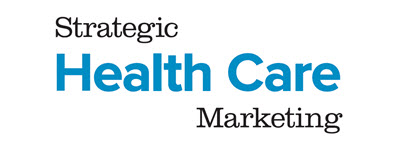Inside the June 2014 print edition of
eHealthcare Strategy & Trends:

- Is Your Appointment Booking System Ready for the 21st Century?
- Healthcare System Develops Hub to Congregate Its Mobile Apps
- Ask The Expert: What Are Best Practices for Physician Directories?
- A New York Hospital Reaps Innovative Ideas from Hackathon
- EHR Best Practices Offered by Cleveland Clinic
- Mobile Analytics: How They Differ, How They Enable
- Web Takes … June Picks: Willamette Valley Medical Center, Reading Health System, Chester Regional Medical Center
- My Internet … Personal Solutions, eNews Pulse
Inside the May 2014 print edition of
eHealthcare Strategy & Trends:
- Aurora Health Care Creates a Best-of Class Patient Portal
- New Online Portal Designed to Help Employees Manage Cancer Diagnosis in the Workplace
- Healthcare Turns to Open Source Software
- After a Three-Year Hiatus from Healthcare, Observations from a Digital Marketing Pro
- Ask The Expert: What Are the Best Ways to Enhance Patient Engagement Across the Healthcare System?
- Web Takes … May Picks: Athens Regional Health System—Wellness, The University of Kansas Hospital, Murray-Calloway County Hospital
- My Internet … Personal Solutions, eNews Pulse
Inside the April 2014 print edition of
eHealthcare Strategy & Trends:
- Focus on Social Business, Not Social Media
- Marshfield Clinic Spins Off Information Services Group
- Ask the Expert: What Are the Top Web Design Trends Today? Not Just Responsive Design
- PinnacleHealth Creates Three Paths to Consumer Engagement
- Web Takes … April Picks: Centegra HealthSystem, Renown Health
- My Internet … Personal Solutions, eNews Pulse
Inside the March 2014 print edition of
eHealthcare Strategy & Trends:
- Virtual Assistants Become the Newest Members of the Healthcare Team
- Protect Your Investment With Usability Testing and Eye Tracking
- Bradford Regional Medical Center Opens First US Inpatient Internet Addiction Program
- Ask the Expert: Are Family Caregivers an Overlooked Audience?
- Building an Intranet Squarely Focused on Employee Engagement
- Web Takes … March Picks: Grady Health System, UConn Health
- My Internet … Personal Solutions, eNews Pulse
Inside the February 2014 print edition of
eHealthcare Strategy & Trends:
- Video Visits Between Patients and Doctors Gain Traction
- Midwest Health System Reduces Online Marketing Competition Among Its Hospitals
- Online Portal Enhances Population Health Management Program — User-Friendly, Customizable Program Helps Employers Reduce Healthcare Costs
- Ask the Experts: What Key Areas Should Healthcare Marketers and Communicators Address?
- Patient-Centric Approach Key to Successfully Reducing Self-Pay Balances
- Web Takes … February Picks: Nash Health Care, Arkansas Children’s Hospital, Stamford Hospital
- My Internet … Personal Solutions, eNews Pulse
Inside the January 2014 print edition of
eHealthcare Strategy & Trends:
- West Coast System Provides Guidance on Effective Online Advertising
- Healthcare and Hummingbird: How Will Google’s Latest Algorithm Affect Your SEO Efforts?
- Data Analytics Drive Marketing Success—Usage Is Not Just for the Big Boys
- Ask the Expert: How Should We Align Our Hospital Strategy With Generational Shifts and Values?
- Web Takes … January Picks: Texas Health Resources—Well-Being, UnitedHealth Group—Careers
- 12 Month Index … January 2013—December 2013
- My Internet … Personal Solutions, eNews Pulse
Inside the December 2013 print edition of
eHealthcare Strategy & Trends:
- Virtual Reality Program Helps Treat Mental Health Problems
- Telemedicine Pilot Aims to Reduce Costs and Improve Access to Care for Rural Children
- Protect Your Game: Hospital for Special Surgery’s Portal for Golf
- Ask the Expert: What Should Digital Healthcare Directors Focus on in 2014? Part Two
- Web Takes … December Picks: Virtual Tours—Roper St. Francis, Holy Redeemer Healthcare at Bensalem, and UCLA Health, MD Anderson Cancer Center—Physician Referral
- My Internet … Personal Solutions, eNews Pulse
Inside the November 2013 print edition of
eHealthcare Strategy & Trends:
- Patient Engagement? There’s an App for That
- Improving the Online Patient Experience: Usability Tests and Task Completion
- Ask the Expert: What Should Digital Healthcare Directors Focus on in 2014? Part One
- 2013 eHealthcare Leadership Award Winners
- Web Takes … November Picks: Gundersen Health System, Mayfield Clinic, Lehigh Valley Health Network
- My Internet … Personal Solutions, eNews Pulse
Inside the October 2013 print edition of
eHealthcare Strategy & Trends:
- Lessons Learned in Building the Brand Through Health Content and Social Media — Conventional Thinking Often Wrong
- Deploying Mobile App to Address a Valuable Need and Transition the Community to Using Technology
- Using Google Analytics to Drive Marketing Decisions — Going Beyond Website Visits and Page Views
- Hashtags on Facebook Don’t Boost Viral Impact
- Ask The Expert: How Do You Build an Effective Dashboard for Digital Marketing?
- Web Takes … October Picks: DMC Surgery Hospital, Coping Club at Kosair Children’s Hospital, Onlife Health
- My Internet … Personal Solutions, eNews Pulse
Inside the September 2013 print edition of
eHealthcare Strategy & Trends:
- Using the Power of a Health Risk Assessment To Build the Brand and Drive Business
- Specialty Medical Practice Uses Appointment Request Feature for Website and Business Success
- Salem Health Uses Video to Get Big Media to Pay Attention; Vehicle Leads New Marketing Push
- Ask The Expert: How is Content Integration the Secret Ingredient for Elevating Online ROI?
- Web Takes … September Picks: Children’s Hospital of Pittsburgh of UPMC, Dean Health, University of Michigan Health System—Quality & Safety
- My Internet … Personal Solutions, eNews Pulse
Inside the August 2013 print edition of
eHealthcare Strategy & Trends:
- The Digital Future of Physician Relations
- Embrace Blogging to Generate Real Patient Connections
- Ask The Expert: How Can Digital Technology Support Brand Building?
- A Different Approach to Patient Billing
- Web Takes … August Picks: Hartford Hospital, Centers for Disease Control and Prevention (CDC)—Infographics, North Valley Hospital, Drugs.com
- The Power of Storytelling
- My Internet … Personal Solutions, eNews Pulse
Inside the July 2013 print edition of
eHealthcare Strategy & Trends:
- Michigan Challenges an Obesity Epidemic with Integrated Marketing, Interactivity, and Corporate Co-Sponsors
- UAB Medicine Develops a Mobile Application with Clear Business Benefits
- Ask The Expert: How Do I ‘Easily’ Calculate ROI in Service-Line Marketing?
- Meridian Health Uses Multiple Marketing Channels to Grow Pediatric Services
- Animations Available Wherever You Go on the Web
- Web Takes … July Picks: Alamance Regional Medical Center, Center for Human Reproduction
- My Internet … Personal Solutions, eNews Pulse
Inside the June 2013 print edition of
eHealthcare Strategy & Trends:
- Second Life Enables Engagement Across Geographic Boundaries
- Oakwood Healthcare Goes Responsive in Website Redesign: Enhancing the User Experience
- Isn’t It Time to Adopt Online Appointment Scheduling?
- Ask The Expert: Should My Website and Print Publications Be Connected?
- Skype Proves to Be Powerful Tool for Family Therapy
- Web Takes … June Picks: Holy Family Memorial, 21st Century Oncology, Winona Health
- My Internet … Personal Solutions, eNews Pulse
Inside the May 2013 print edition of
eHealthcare Strategy & Trends:
- Hospital-Sponsored Physician Review Site a Success—Rich Snippets, Robust Information Boost SEO and Visits to Hospital Website
- Move Your Marketing Research Efforts into the 21st Century
- Marketers Take Note—Major Design Changes Coming to Your YouTube Channel
- Ask The Expert: Can Lifetime Value of a Patient Be Calculated? Is It Worth the Effort?
- Web Takes … May Picks: Indiana University Health, Saint Agnes Hospital—360 Your Health from Every Angle, Valley Health System
- My Internet … Personal Solutions, eNews Pulse
Inside the April 2013 print edition of
eHealthcare Strategy & Trends:
- Getting the Most out of LinkedIn and Facebook for Recruitment
- MD Anderson Cancer Center Taps Technology to Empower Patients
- SEO Lessons Learned by Integris Health
- Ask The Expert: How Do I Best Create Valuable Website Content?
- Web Takes … April Picks: Methodist Healthcare, Legacy Health, Baylor Health Care System
- My Internet … Personal Solutions, eNews Pulse
Inside the March 2013 print edition of
eHealthcare Strategy & Trends:
- SharePoint—The Real Opportunities for Healthcare
- Ten Best Practices for Creating Great Landing Pages
- Ask The Expert: How Can I Best Use Digital Communications to Market to Referring Physicians?
- The Definition of Healthcare is Changing: New Standards for Population Health Management
- Web Takes … March Picks: Lakeland HealthCare, Scripps Health, Hebrew SeniorLife—ReAge
- My Internet … Personal Solutions, eNews Pulse
Inside the February 2013 print edition of
eHealthcare Strategy & Trends:
- Cleveland Clinic Takes New Tack to Build the Brand—Health and Wellness Content in Special Hub and Across Multiple Digital Channels
- Good Advice for Those Tempted to Try Facebook Ads
- Cleveland Clinic ‘Cracks’ the Facebook Code
- Six Inducted into Healthcare Internet Hall of Fame
- Ask The Expert: How Can Predictive Analytics Help Marketers Address the Changing Healthcare Landscape?
- Consumer Engagement Via Online Physician Videos—Going Way Beyond the Mundane
- Web Takes … February Picks: The Corner Health Center, Winchester Hospital, Willis-Knighton Health System—Homework Help Center
- My Internet … Personal Solutions, eNews Pulse
Inside the January 2013 print edition of
eHealthcare Strategy & Trends:
- Best Practices in Web Content Development—An Effective, Unexpected Approach from an Academic Medical Center
- Mercy Health System’s Rebranding Efforts Come to Life on the Web
- Ask The Expert: What Should Digital Healthcare Directors Focus on in 2013? Part Two
- Web Takes … January Picks: UnitedHealthcare: Health Care Lane—Community Center, American Foundation for the Blind, Rex UNC Health Care
- 12 Month Index … January 2012—December 2012
- My Internet … Personal Solutions, eNews Pulse
Inside the December 2012 print edition of
eHealthcare Strategy & Trends:
- Responsive Web Design Enhances Mobile Browsing
- Like It or Not, You Need an Intranet. The Question Is, How Do You Make It Better?
- Ask The Expert: What Should Digital Healthcare Directors Focus on in 2013? Part One
- 2012 eHealthcare Leadership Award Winners
- How to Promote Your Organization ‘Everywhere’ and Spend Less Doing It
- Web Takes … December Picks: Moffitt Cancer Center, Memorial Healthcare System—Newsroom, Healthcare Toolbox
- My Internet … Personal Solutions, eNews Pulse
Inside the November 2012 print edition of
eHealthcare Strategy & Trends:
- Regional Hospital Uses Website and Search to Take on the Competition
- Penn Medicine Supplies Roadmap to Digital Marketing Success
- Today’s Mobile Opportunity: Business and Marketing Applications
- Ask The Expert: Are e-Newsletters Still a Valuable Marketing Tool for Hospitals?
- Web Takes … November Picks: Edward Medical Group Physicians, Sher Fertility Clinics—Centers for Reproductive Medicine, Alice Hyde Medical Center
- My Internet … Personal Solutions, eNews Pulse
Inside the October 2012 print edition of
eHealthcare Strategy & Trends:
- A Midwest Health System Redesigns Its Website to Focus on Driving Business
- To Improve Paid Search, Develop a Good Negative Keyword List
- How a Cancer Center Leveraged Physician Ratings and Reviews for Patient Acquisition
- Ask The Expert: How Can the Web Assist in Building and Managing a New Brand?
- Gauging the Search Engine Optimization of a Healthcare Website
- Web Takes … October Picks: UCB, Inc.- Cimzia Online Ads, Hackensack University Medical Center
- My Internet … Personal Solutions, eNews Pulse
Inside the September 2012 print edition of
eHealthcare Strategy & Trends:
- The $1 Million Connection—A Midwest Health System Uses Targeted Marketing Programs and Call Center Communications Hub to Sharply Increase Patient Appointments
- Geek Chic in a Changing Healthcare World—Effectively Communicating and Promoting Technology Changes
- Ask The Expert: The Doctor Will Tweet You Now—Is There a Compelling Case for a Physician-Directed Social Media Strategy?
- A Regional Hospital Systematically Builds a Powerful Website and Other Digital Communications
- Web Takes … September Picks: Pardee Hospital—PardeeSelect, QuEST2StopStroke, Altru Health System
- My Internet … Personal Solutions, eNews Pulse
Inside the August 2012 print edition of
eHealthcare Strategy & Trends:
- Website Accessibility—Addressing the Needs of Millions of Potential Patients
- Instagram: A Snapshot of Early Hospital Adoption
- Georgia Organization Introduces New Website in Challenging Media Market
- Modern Speech Technology Understands, Talks Back, and Takes Action in Electronic Medical Record Systems
- Ask The Expert: How Can We Enhance the Value of Our Website with Stand-Alone Modules?
- Web Takes … August Picks: Mountain View Hospital, The Elizabeth Hospice, Children’s Healthcare of Atlanta, Lafayette General Medical Center
- My Internet … Personal Solutions, eNews Pulse
Inside the July 2012 print edition of
eHealthcare Strategy & Trends:
- Florida System Makes Major Commitment to Social Media
- Social Media Boosts Drug Literacy Program
- Ask The Experts: What Are Some Strategies for Improving Conversion Rates?
- Medical College of Wisconsin Almost Solves the Problem of Precisely Matching Consumers with the Right Physicians.
- Key Takeaways from Audio Conference on How to Succeed with Paid Search Marketing
- Web Takes … July Picks: Kettering Health Network—Community Benefit, Susquehanna Health, Shasta Regional Medical Center, ProCure Proton Therapy Center in Oklahoma City
- My Internet … Personal Solutions, eNews Pulse
Inside the June 2012 print edition of
eHealthcare Strategy & Trends:
- Affiliate Sales, Online Gift Shops Bring in Revenue, Add to Website User’s Experience
- Community Health Needs Assessment: Participate or Face Penalties
- Ask The Expert: What Are the Top Mobile Considerations Today?
- Consumers Embrace Social Media for Health Information, But Involvement by Healthcare Organizations Lags, Finds Study
- Five Essentials to Consider About the Facebook Timeline for Brands
- Web Takes … June Picks: Rush University Medical Center—Transforming, Burke Rehabilitation Center, University of Michigan Health System—Quality
- My Internet … Personal Solutions, eNews Pulse
Inside the May 2012 print edition of
eHealthcare Strategy & Trends:
- Virtual Spokespersons Need to Do More Than Pop Up and Say ‘Hi’
- Twitter Pulls Back the Curtain on Hospital Procedures
- Ask The Expert: Should My Hospital Accept Advertising on Its Website?
- Digital Marketing in Healthcare: Where’s the Rub?
- Web Takes … May Picks: HealthyPlace.com, Phillips Respironics—Areyousnoring.com, UW Health—American Family Children’s Hospital, Health Net—Provider Search
- My Internet … Personal Solutions, eNews Pulse
Inside the April 2012 print edition of
eHealthcare Strategy & Trends:
- Hospitals and Pinterest: A Match Made in Heaven?
- Targeted Facebook Ad Campaign Turns an OB/GYN into a Local Celebrity
- Midwest Health System Launches e-Chaplain Ministry
- Study Finds Hospital Websites Often Fail in Providing Strong User Experience
- Ask The Expert: How Can Hospitals Keep Their Physician Directories Current and Relevant?
- Children’s Hospital Pursues Niche Marketing
- Web Takes … April Picks: Fox Chase Cancer Center—Clinical Outcomes, Highland District Hospital, Saint Agnes Hospital
- My Internet … Personal Solutions, eNews Pulse
Inside the March 2012 print edition of
eHealthcare Strategy & Trends:
- Can Healthcare Organizations Find Wisdom in the Crowd?
- Mobile, Social Games Poised to Impact Healthcare
- Ask The Expert: Is Google+ a Social Media Tool for Healthcare Marketers?
- HIMMS 2012 Reflects Growing Importance of Consumer Engagement
- Top Five Reports for SEO in Google Webmaster Tools
- Web Takes … March Picks: Saint Thomas Health, Dana-Farber Cancer Institute, Regional Health, Prominence Treatment Center
- My Internet … Personal Solutions, eNews Pulse
Inside the February 2012 print edition of
eHealthcare Strategy & Trends:
- Health System Partners with IT Firm to Launch Mobile Sleep Monitoring Application
- Creative Ideas to Combine Wayfinding and Mobile Marketing
- Ask The Expert: Can You Provide Guidance on Redesigning a Home Page?
- Survey: More Consumers Scan QR Codes, Mostly Positive About Benefits
- How Your e-Healthcare Colleagues Respond to Some Key Issues
- Ways to Perfect Your Intranet to Engage Staff
- Web Takes … February Picks: Rush University Medical Center—Rushstories, Tanner Health System—Quality & Safety and Tanner Finder, Christiana Care Health System—Service Sections and Construction Update
- My Internet … Personal Solutions, eNews Pulse
Inside the January 2012 print edition of
eHealthcare Strategy & Trends:
- Video Chat: Why Physicians Are Saying ‘Skype Me!’
- Houston Health System Takes Initiative in Launching Health Information Exchange
- Ask The Expert: What Do I Need to Consider in Monitoring Social Media and What Kinds of Tools Are Best to Use?
- Real-Time Monitoring of Imaging Center Operations Lifts Patient Satisfaction Scores
- Web Takes … January Picks: Alexian Brothers Health System, St. Vincent’s Healthcare, Edward Hospital & Health Services
- My Internet … Personal Solutions, eNews Pulse







